|
Common Raven Corvus corax
|
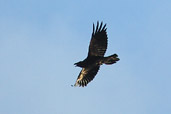 |
The Common Raven is found throughout much of Europe, northern and central Asia and the north of North America.
See the distribution map at Birdlife International. It is
tolerant of a wide variety of habitats but avoids wetlands, dense forest and intensively farmed or grazed land. Consequently it is not normally found
in the lowlands of Europe such as eastern England and much of France, the Low Countries and Germany. |
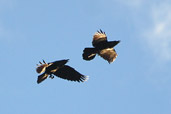 |
It is an opportunistic feeder and, while maybe best known as a scavenger, it will also attack weak or injured
animals, lunging with its strong bill and often aiming at the eyes. Other food sources are nestlings robbed from the nest and shellfish picked up on
the shore. Cereals and fruit are also included in its wide diet. |
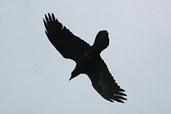 |
It is the largest passerine (perching bird) and is the size of a Common Buzzard Buteo buteo.
It is all black and its plumage has a metallic sheen. The bill is very thick and powerful and the feathering on the throat is
shaggy. In flight it shows long, narrow-looking wings with obvious "fingers", a projecting neck and a wedge-shaped tail.
|
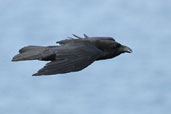 |
It has an unmistakable low-pitched croaking call and, within the
confines of the Kato Zacro Gorge in Crete where the first two photos were taken, the slow beating of the wings was amplified to an almost mystical
extent.
At this site there was a small flock of 5 birds and they exhibited a
high degree of "playfulness" chasing each other and tumbling in the sky for no apparent reason other than enjoyment. They were certainly a
joy to watch.
|
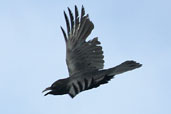 |
Photo 7 was taken in the Yukon, Canada and is the subspecies C. c. principalis while photo 8, taken in
Morocco is of the sub-species C. c. tingitanus.
There is an excellent page on Wikipedia.
|
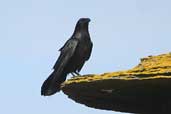 |
|
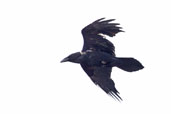 |
|
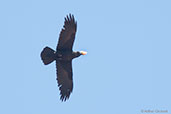 |
|
|
|







